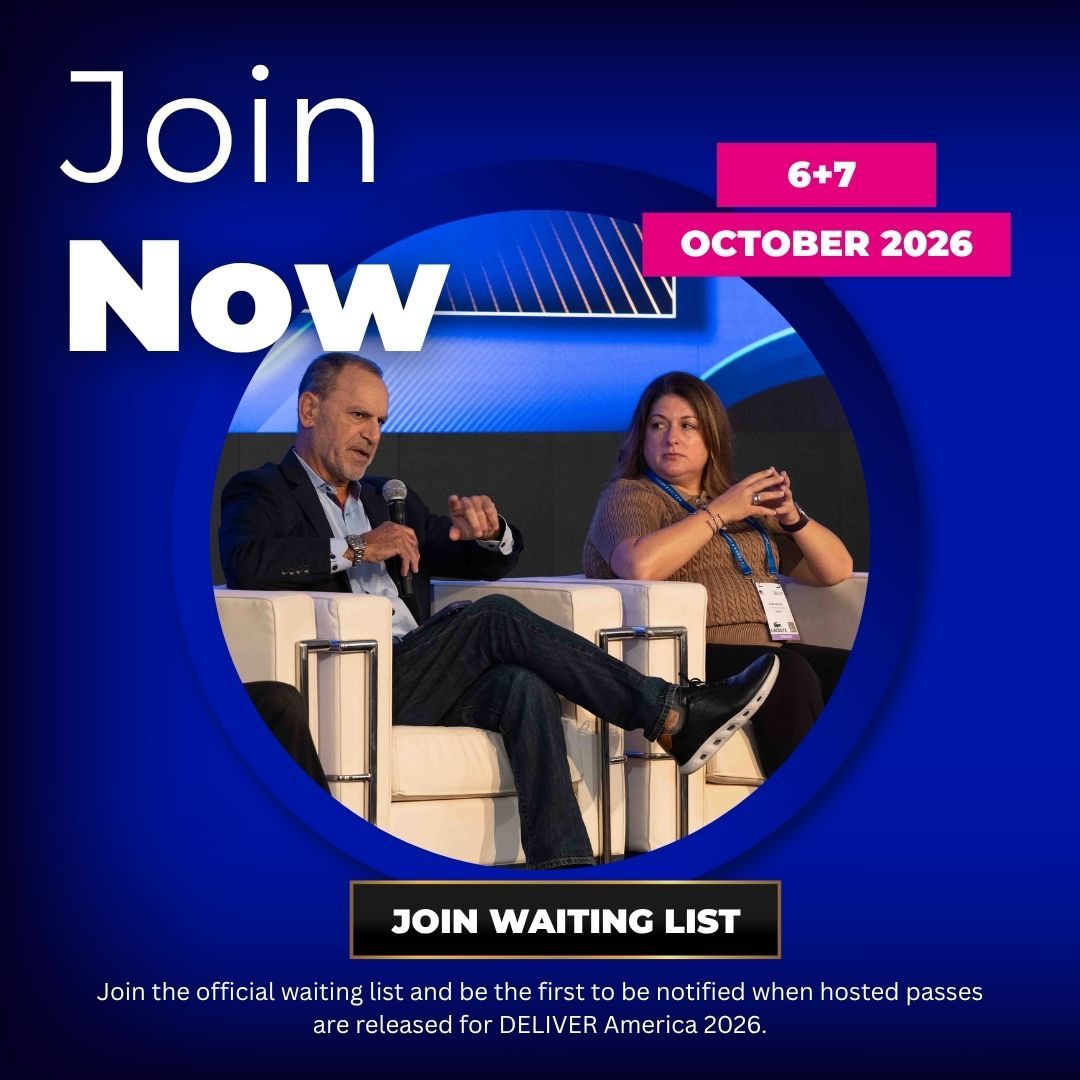The Future of Immersive Retail Concepts
Retail’s Platinum Era Begins
Retail is evolving faster than ever — and according to Alex Rangel, Vice President of Marketing & Strategy at Future Stores, we’re entering a “platinum era.” Joined by Kate Hardcastle, global retail expert and founder of The Customer Whisperer, Rangel took the stage at DELIVER America 2025 to share how immersive and intelligent retail environments are rewriting the rules of engagement.
“Consumers’ expectations now shift by the minute, not the season,” said Hardcastle. “The challenge for brands is creating seamless experiences that can move at the same speed.”
Rangel agreed — and offered a bold vision for how physical retail can keep up with the velocity of digital culture.
From the Speed of Culture to the Future Store
“We live in an age defined by the speed of culture,” Rangel began. “Look at how we consume content — instantly, visually, interactively. That same expectation now applies to commerce.”
The problem? Most physical retail still moves at the pace of seasonal calendars and traditional merchandising cycles. “If you walk down the high street, it all looks the same,” he said. “Meanwhile, your social feed changes every second. That disconnect inspired us to build Future Stores.”
Future Stores began as a permanent, ever-changing retail hub on Oxford Street in London. Its core principle is adaptability — a physical space that transforms as quickly as a digital platform. “One day it’s a tech showcase, the next it’s a fashion pop-up. It’s retail that evolves in real time,” said Rangel.
The Intelligent Store: Data as Design
What sets Future Stores apart isn’t just its aesthetics — it’s its intelligence. Each space is wired with embedded sensors, footfall tracking, and AI-driven analytics that blend commerce, media, and data collection into a single ecosystem.
When Intel partnered for the store’s launch activation, 15 million people walked past within the first month. Using facial-recognition and heat-mapping technology (in compliance with privacy safeguards), Future Stores captured impressions, dwell time, and conversion behavior — metrics once reserved for e-commerce.
“Retail has always generated data,” Rangel said, “but it lived in silos. We combined awareness, engagement, and sales data into one feedback loop — a true 360-degree view of how people behave in-store.”
The results spoke volumes: during the Intel campaign, local market sales increased by 60% year-over-year.
Real-Time Testing and “Dirty Maths”
Hardcastle, who has spent three decades advising global retail brands, emphasized how this intelligence solves a long-standing problem: the slow speed of insight.
“We used to test perfume packaging for months,” she said. “Now, with Future Stores, you can see in real time which version customers gravitate toward.”
Through heat mapping, gaze tracking, and dwell analysis, brands can make merchandising decisions in hours instead of weeks — collapsing the traditional research and sales funnel into one live experiment.
From Static Retail to a Living Media Platform
Rangel described Future Stores as “retail-as-media.” The environment combines physical display, activation, and transaction under one roof, treating the store as a content engine that constantly refreshes.
“Every brand that comes in creates something new,” he said. “You might have a one-day activation, or a three-month takeover. But each is part of an integrated campaign that spans online and offline — what we call the ‘bow tie effect.’”
This approach connects pre-launch digital buzz, live in-store experience, and post-event social storytelling. The result is a continuous cycle of engagement that extends far beyond the physical space.
Generative AI and Personalized Experience
The next evolution of immersive retail, Rangel revealed, lies in AI-driven content creation.
“Underneath every LED wall in our stores are sensors and data feeds,” he said. “With generative AI, we can now create new content in real time based on audience behavior — experiences that have never existed before, and never will again.”
This blend of machine creativity and human design allows brands to deliver one-of-a-kind, personalized moments for each visitor — something that even the best e-commerce experience can’t replicate.
“It’s flipping the question,” said Rangel. “Instead of asking how physical retail can catch up with digital, we’re asking how retail can deliver what digital never could.”
Global Expansion and Cross-Market Insights
Following its success in London, Future Stores has launched new locations in New York, Munich, Seoul, Paris, and Los Angeles. Each site acts as a laboratory for cultural insights, enabling brands to study consumer behavior across markets in real time.
“We’re learning how culture, context, and behavior differ by region — and what remains universal,” Rangel said. “It’s a powerful way to unify global retail data without losing local nuance.”
The Mindset Behind the Model
Asked how retailers and logistics players can plug into this new model, Rangel’s answer was simple: mindset first, technology second.
“You can’t innovate if you’re afraid to fail,” he said. “The organizations that will thrive are those willing to experiment — to prototype, test, learn, and iterate.”
Hardcastle echoed that sentiment:
“Everyone at this event understands transformation. The key is to anchor it in customer experience and use data as your compass, not your crutch.”
The future of immersive retail, they agreed, is both high-tech and deeply human — where data drives design, and experience drives loyalty.


